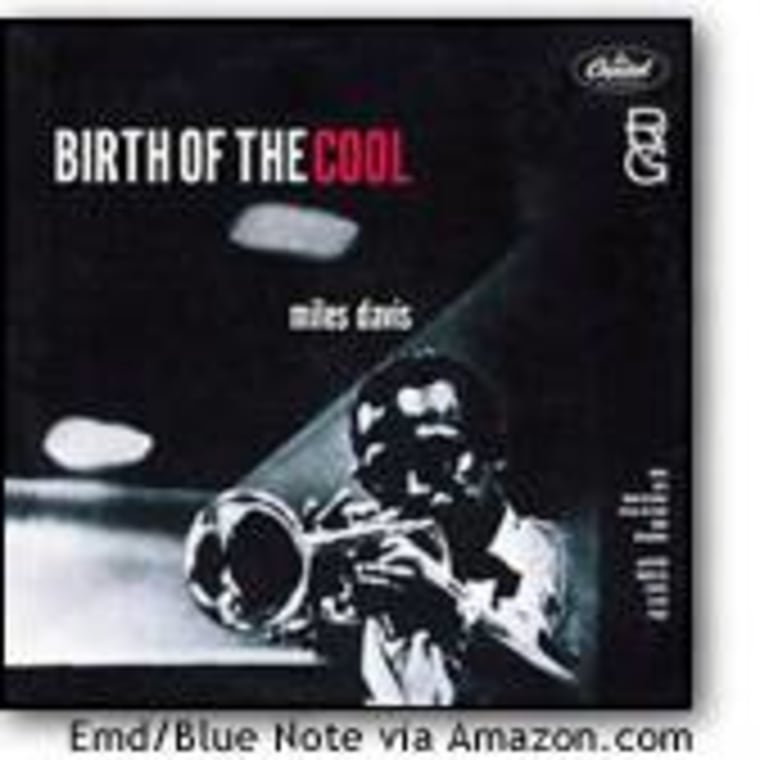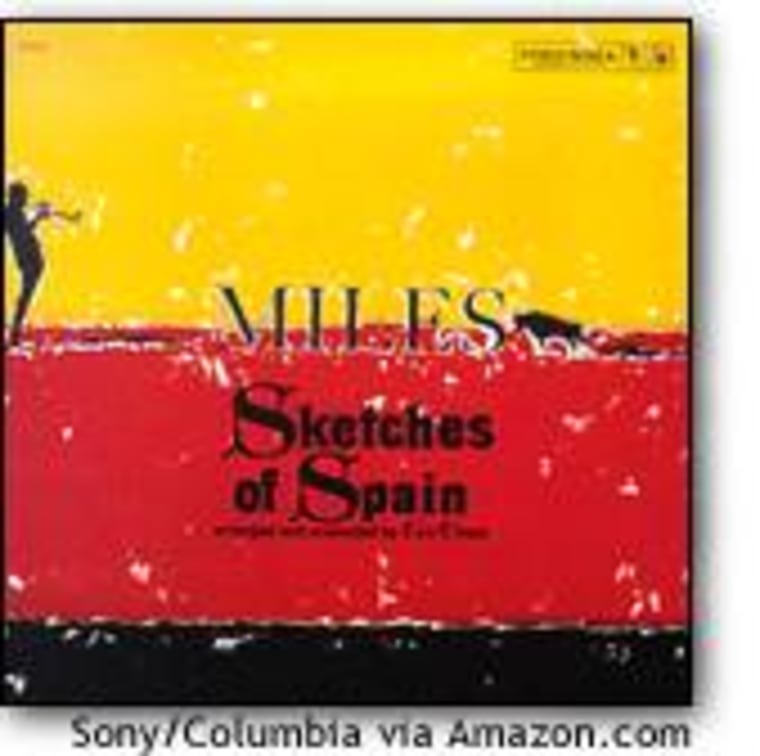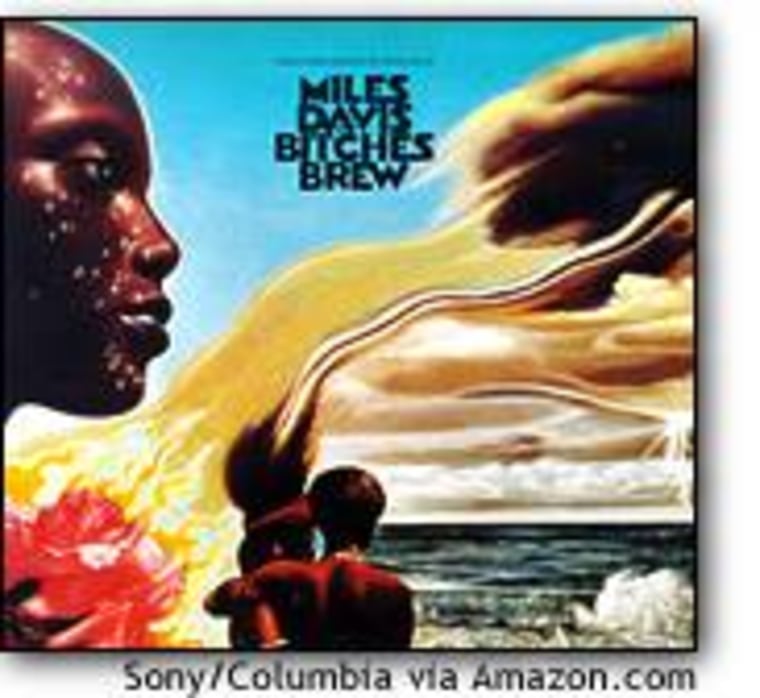Years ago, in one of his stand-up comedy routines on the “Tonight” show, Bill Cosby tried to describe the experience of listening to the music of Miles Davis. As befits a profoundly physical comedian, Cosby explained a lot without saying a word: standing with his head cocked at an impossible angle, eyes squinted, in a posture of someone trying to understand something new, to get an ear around music from an uncharted place.
In many ways, that says it all about Miles Dewey Davis Jr.: One can imagine there was the same reaction to the early Cubist paintings, the brazen loudmouth strategies of the young Muhammad Ali, or the first electric rumblings of that other musical iconoclast, Bob Dylan, at the Newport Folk Festival in 1965. Even as we celebrated Dylan’s 60th birthday last week — and happily he’s still with us — we can’t help but wonder where music would be if Davis were still alive to participate actively in the evolution he helped to begin.
Miles, who died in September 1991 (he would have been 75 on Saturday), figures in virtually every aspect of modern music. He was always the chameleon man of jazz, pushing against even the boundaries he helped establish.
In the late ’40s his cool jazz was the early soundtrack of the postwar dynamic; in two incarnations of his quintet he altered jazz music. And his later musical journeys — seemingly unruly and undisciplined — joined disparate musical forms like rock and jazz. His experiments with rhythms and sampling prefigured hip-hop, and much that came after.
Revisionism takes hold
A fashionable revisionism has taken hold in recent years, one that’s sought to denigrate Davis’ singular contribution to modern music. And it’s true that certain aspects of the Davis musical persona seem almost willfully antagonistic, begging for parody and ridicule.
That insistent, take-no-prisoners aspect of Miles’ art happened early on. Working with Miles was more than an honor; for many musicians it was going into the academy, like West Point and boot camp combined.
His bands were the proving grounds for the tyros of the moment, from John Coltrane to Wayne Shorter, from Herbie Hancock to Tony Williams, from Charles Mingus to Branford Marsalis. For many junior players, Miles was the erratic, tempestuous gold standard of the innovative musicianship that defines jazz.
Not that Miles ever made it easy. He was said to be tough, willing to upbraid a player on the bandstand when necessary. Jazz folklore is rife with stories about his smoldering temper, his singular appetites, his passion for living large. There are pictures that corroborate the rumors: Miles in the boxing ring; Miles in some domestic dispute; Miles, dazed and bloodied, after an ugly encounter with two New York City cops outside Birdland.
The holy trinity
These were the sideshows; the main attraction was the music. In more than 40 years of recording, Davis produced albums that reflected great depth and growth, while others seemed to be so much sonic noodling. But three in particular form a sort of holy trinity among jazz fans.

“Birth of the Cool” (1949-’50) is a classic example of a musical work being in exactly the right place at exactly the right time to define a culture. The album’s muted but urgent melodic energies and the spare, elemental style of the musicians — a great group of players including Kai Winding and Gerry Mulligan, Lee Konitz and Max Roach — helped define postwar cool, giving voice to that curious era that blended ennui and tension, the brittle possibilities of life in the shadow of the atomic bomb, that feeling that anything could happen at any time.
Among the cultural signposts that defined that short break between the end of World War II and the rise of rock ’n’ roll, three are most significant: the words and philosophy of the Beat movement; the emergence of the rebel actor typified by Clift, Brando and Dean; and the early cool sound of Miles Davis.

With “Kind of Blue” (1959), the rough edges of cool’s nascent form on “Birth” were more refined, more polished, Davis’ play more confident. With players like Coltrane, Cannonball Adderley, Paul Chambers and Wynton Kelly in tow, Davis recorded an album that would stand as an archetype of jazz improvisation, a record held by many to be the greatest jazz album ever recorded.
“Sketches of Spain” (1960) was the product of perhaps the most fertile period of Davis’ collaboration with conductor-arranger Gil Evans. “Sketches” combined classical Iberian melodies with jazz compositions, creating a lush, vibrant hybrid that amazes listeners today.
Quincy Troupe, who collaborated with Davis on his 1989 autobiography, “Miles” (Touchstone/Simon & Schuster), calls Davis “one of the most significant artists of the 20th century, a great player, bandleader and composer.”
But for Troupe, Davis was more. Miles Davis angered the politburo of the music critics by not hewing to the stylistic orthodoxies. Troupe said Davis’ willingness to venture into uncharted territory was crystallized by “Bitches Brew,” his 1969 blend of jazz, rock and funk sounds — a release that for many listeners is a convenient dividing line between tradition and innovation, the Miles Davis they could tolerate and the Miles Davis they’d never accept.
“Miles Davis was a black man — I like to say an unreconstructed black man, one who didn’t smile and play games,” Troupe said. “Most of these old-line critics dismiss his music from ‘Bitches Brew’ on,” Troupe said. “They were very angry with him. He got away from the European structure of melody and lyricism, and they didn’t like that. He went into a more rooted, more African style of music. They didn’t know how to deal with that; they’d just dismiss it out of hand.”

Troupe had a long relationship with Davis; their collaboration on the autobiography “Miles” began in 1986. A celebrated poet, Troupe is now finishing the screenplay of “Miles and Me” (University of California Press, 2000), a memoir of his experiences with Davis. For him, Davis was a mercurial presence. “He could be very generous, but on the flip side he could be hard to get along with,” he said. “He was a complex, temperamental person. If he didn’t want to talk one day, he didn’t talk that day. He had diabetes and sickle cell anemia, and he was in pain a lot. And he didn’t suffer fools lightly.”
Towards the end, Davis was a parodist’s dream; it was easy to take cheap shots about the physicality of his performances: Miles wearing his trademark comically oversized sunglasses; Miles turning his back on the audience; Miles playing doubled over, the bell of his horn inches from the floor.
Later works belittled
Others have little use for this incarnation of Miles Davis, even while acknowledging the power of his earlier statements. Stanley Crouch, a novelist, essayist and former jazz musician, is among them. “I don’t think he made much of a contribution in the last 20 years,” Crouch said. “People get sentimental; they want to pretend he was still doing something. It’s so sad in comparison to what he did earlier. I don’t think it had much esthetic impact at all.”
“But because his contributions were so extraordinary, he’s something like Herman Melville,” Crouch said. “Melville never wrote another novel close to ‘Moby-Dick,’ but his stature is based not on what he didn’t do but on what he did do. The body of work that we have reveals exceptional variety.”
Crouch, who decried Davis’ dress style of the ’70s and ’80s (“he looked to me like an extra in a science-fiction movie”), once held out hope — with many of his fans — that the power and poetry of an earlier Miles Davis would somehow return.
“If he’d been in good health, you never know what he would have been,” Crouch said. “That last performance at Montreux, he was hoping to get back to that level he was at in the late ’50s.”
It wasn’t to be. There was much about Miles the adventurer that’s tantalizing for what could have been. If you’re any fan of popular music, for example, you’d love to have been a fly on the wall when Miles met Prince in 1986 — beginning a musical and spiritual friendship that would last the rest of Davis’ life.
But jazz fans have much to celebrate and to remember. His approach to his listeners and sidemen alike was and is, finally, both autocratic and democratic. Whether you’re a jaded, venerable jazz fan or a newcomer to that singularly American music, coming to grips with the work of Miles Davis, you face the unwritten rule of any true art: You must come to it; it does not come to you.
